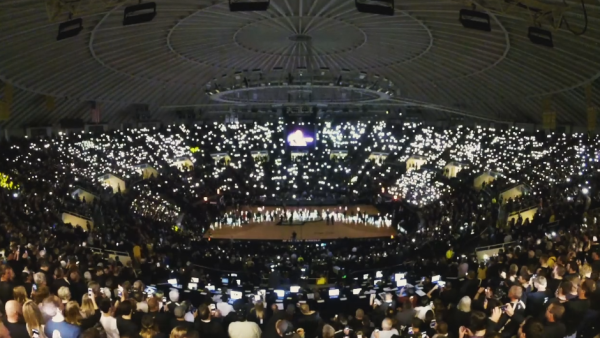18 months ago, [Jameson Rader] didn’t know how to code. He had an economics degree and worked for a minor league hockey team. He did have a dream, though. Broadcasting data through sound. When we say broadcast, we mean broadcast – as in one sender and thousands of receivers.
[Jameson] didn’t have the money to hire a team to build his application. So he did what any self-respecting hacker would do. He bought a few books and taught himself to code. We’re talking about a smartphone app here, so Java and Objective-C were necessary to cover Android and iOS devices. The result is XT Audio Beacons.
[Jameson] has created a light show for stadiums which requires no new hardware infrastructure. Ultrasonic cues are added to a pre-recorded soundtrack and played over the PA system. Fans attending the show simply run an app and hold up their smartphone. The app listens for the cues and turns on the camera flash. The result is a light show which can be synchronized to music, sound effects, or whatever the event calls for. Since the system relies on sound, the App only needs permissions to access the microphone. The system would still work even if the phones were in airplane mode.
Transmitting data to smartphones via ultrasonics isn’t exactly new. Amazon uses it in their Dash Buttons, and Google uses it in their OnHub. Using it as a broadcast medium in a stadium is a novel application, though. [Jameson] also has demos showing XT Audio Beacons being used for more mundane purposes – such as troubleshooting electronics, or even as an acoustic version of an iBeacon.
Most important here is that [Jameson] isn’t keeping all this new knowledge to himself. He’s published the source to his application on Github under the MIT license.
You can see the system in action – and even try it yourself, in the video after the break.
If you want to learn more about [Jameson] and his journey, definitely check out his AMA on Reddit.
Continue reading “Stadium Sized Cellphone Light Show Is Controlled By Sound”










